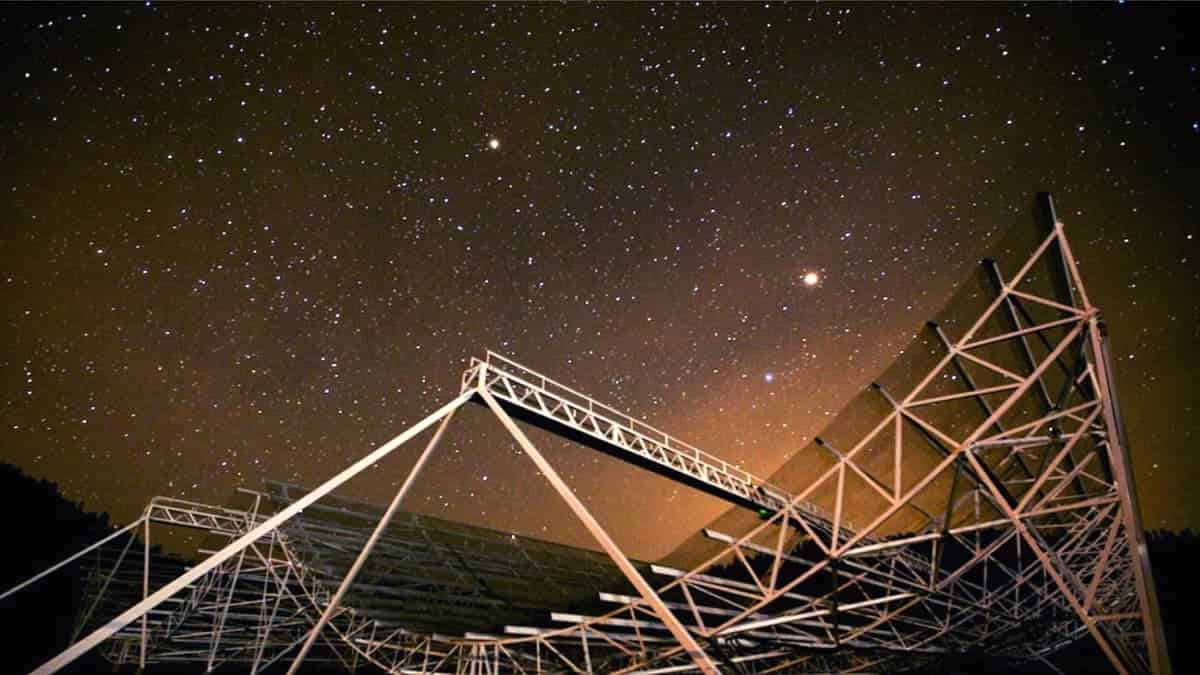Billions of light years away from Earth, astronomers discover a radio “heartbeat”

A peculiar and persistent radio signal from a distant galaxy has been discovered by astronomers at MIT and universities in Canada and the United States. This signal appears to be flashing with a startling degree of regularity.
The signal is categorised as a fast radio burst (FRB), which is a brief but extremely powerful burst of radio waves with an unknown astrophysical origin. However, compared to the typical FRB, this novel signal lasts up to three seconds, or 1,000 times longer. The scientists discovered radio wave bursts within this window that have a distinct periodic rhythm and reoccur every 0.2 seconds, resembling a heartbeat.
The signal, FRB 20191221A, was identified by the researchers as the longest-lasting FRB to date and having the most distinct periodic pattern.
Several billion light-years away from Earth, in a far-off galaxy, is where the signal’s source is located. Astronomers believe the signal may have come from either a radio pulsar or a magnetar, two different forms of neutron stars that are incredibly compact and fast spinning collapsed cores of big stars. However, the precise nature of that source is yet unknown.
According to Daniele Michilli, a postdoc at MIT’s Kavli Institute for Astrophysics and Space Research, “There are not many things in the universe that emit strictly periodic signals.” “Examples that we know of in our own galaxy are radio pulsars and magnetars, which rotate and produce a beamed emission similar to a lighthouse. And we think this new signal could be a magnetar or pulsar on steroids.”
In order to use this source as an astrophysical clock, the team wants to find more periodic signals from it. For instance, the velocity of the universe’s expansion might be gauged by the frequency of the bursts and how they alter as the source travels away from Earth.
“Boom, boom, boom”
Since the first FRB was found in 2007, hundreds of comparable radio flashes have been found throughout the cosmos. The most recent discovery was made by the Canadian Hydrogen Intensity Mapping Experiment, or CHIME, an interferometric radio telescope made up of four sizable parabolic reflectors at the Dominion Radio Astrophysical Observatory in British Columbia, Canada.
CHIME, which is built to detect radio waves released by hydrogen in the very early phases of the universe, continuously scans the sky as the Earth spins. The telescope is also capable of picking up fast radio bursts, and since it started scanning the sky in 2018, CHIME has picked up hundreds of FRBs coming from various locations.
One-off FRBs, or extremely brilliant radio bursts that last only a few milliseconds before blinking off, make up the great majority of FRBs that have been seen so far. The first periodic FRB that seemed to emit a predictable pattern of radio waves was recently found by scientists. This signal was made up of four days of random bursts that would then repeat every 16 days. Although the signal from the radio bursts itself was random rather than periodic, this 16-day cycle showed a periodic pattern of activity.
When CHIME detected a potential FRB signal on December 21, 2019, Michilli, who was scanning the incoming data, was promptly alerted.
It seemed strange, he remembers. It was around three seconds long and very long, but it also had periodic peaks that were astonishingly exact, emitting every fraction of a second with the sound “boom, boom, boom” as if it were a heartbeat. The signal itself is periodic for the first time at this point.


